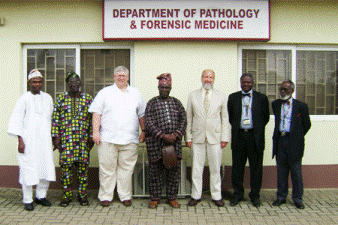Natural Resources, School of
Date of this Version
9-2013
Document Type
Article
Citation
Published in International Journal of Paleopathology 3:3 (September 2013), pp. 150–157; doi: 10.1016/j.ijpp.2013.05.003
Abstract
Pathoecology provides unique frameworks for understanding disease transmission in ancient populations. Analyses of Old and New World archaeological samples contribute empirically to our understanding of parasite infections. Combining archaeological and anthropological data, we gain insights about health, disease, and the way ancient people lived and interacted with each other and with their environments. Here we present Old and New World parasite evidence, emphasizing how such information reflects the different ways ancient populations exploited diverse environments and became infected with zoonotic parasites. It is clear that the most common intestinal helminthes (worm endoparasites) were already infecting ancient inhabitants of the New World prior to the European conquest, although not so intensely as in ancient Europe. The first paleoepidemiological transition from hunting–gathering to agriculture did not change the zoonotic infection pattern of people in the Americas. However, the same transition in Europe resulted in increased zoonotic parasitism with parasites from domestic animals. Therefore, there is a demonstrable difference in the impact of the first paleoepidemiologic transition in the Americas compared to Europe.
Included in
Biodiversity Commons, Food Microbiology Commons, Other Animal Sciences Commons, Parasitology Commons, Pharmacology, Toxicology and Environmental Health Commons


Comments
Copyright © 2013 Elsevier Inc. Used by permission.